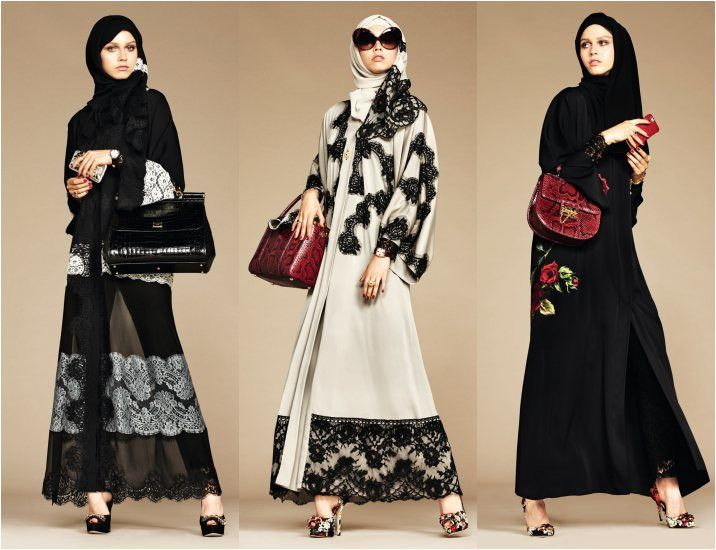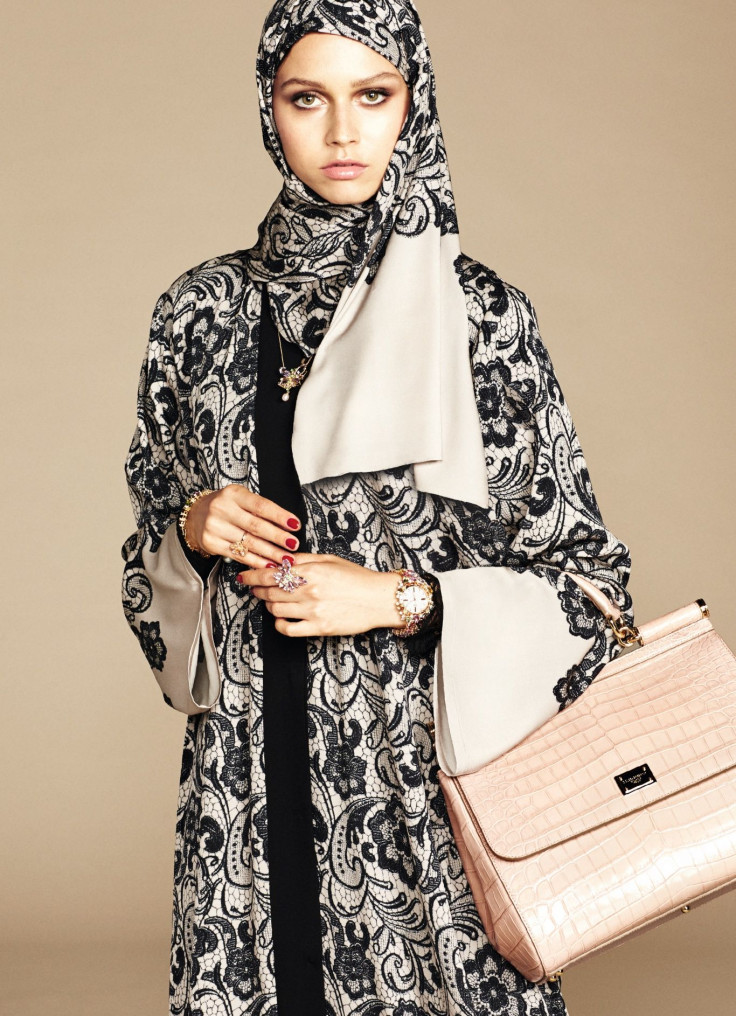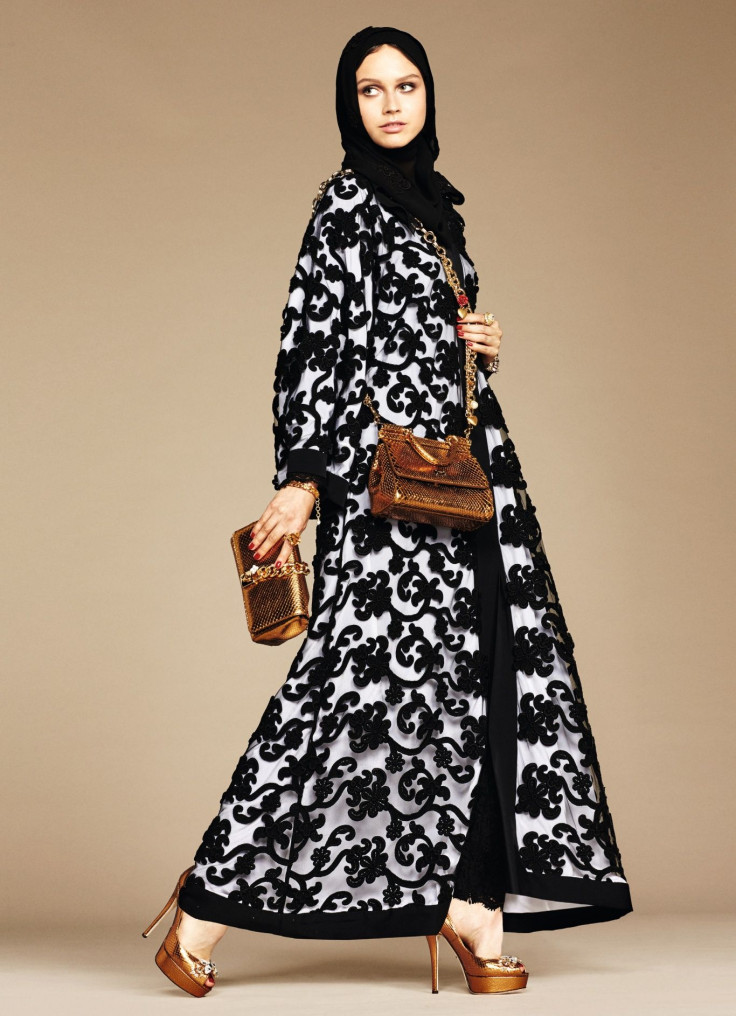Australian Muslim women react to Dolce & Gabbana's debut hijab and abaya collection

Dolce & Gabbana has debuted its first-ever line of hijabs and abayas, making a move to cater to the expanding Muslim market.
Italian designers Domenico Dolce and Stefano Gabbana first revealed the range on Style.com/Arabia. Fourteen looks in neutral black and beige tones with lemon, daisy and rose print designs were showcased, complete with lace detailing and satin weave charmeuse fabrics.
Yahoo noted that the Muslim demographic on clothing and footwear spending is increasing and will reach US$484 billion (AU$696 billion) by 2019, according to a 2014-2015 report by Thomson Reuters.
Mona Abu Zalaf, a Sydney-sider who wears the hijab, welcomed the move, saying Dolce & Gabbana was catering to a market “that doesn’t have many options” for Muslim women.
“I [often] need to return dresses or change colours simply because I am unable to find the right colour scarf and body tops,” Abu Zalaf, who has retail experience at Soiree Designs, told the International Business Times Australia.
“I witness on a daily basis the troubles scarfed women go through to reconcile fashion with modesty. In Sydney, we are fortunate to have many options available to scarfed women. In other states across Australia, they are not so fortunate.
“[The collection] reveals what this market has been lacking for a long time . . . It’s a good step for the fashion industry as it means recognising a market that has for a long time exerted a lot of effort to adopt the latest trends in a way that also aligns with their religious values.”
Vanessa Roberts, editor of popular fashion site Breakfast With Audrey, also applauds the move by the Italian fashion house, claiming that all races, religions and creeds have a right to be represented in fashion.
“No matter what perspective you come from, the majority of people take great pride in their style and overall appearance. We’re all buyers! It makes complete sense to me that brands and retailers are upping their focus on previously under-served segments of the market,” Roberts told IBTimes.
“The luxury brands such as Dolce & Gabbana certainly treasure their Middle Eastern client, it only seems fitting that these brands would create products to cater to that important market.
“On the other hand, given that image is everything in fashion, I doubt a brand would embrace the Muslim culture if it wasn’t popular for them to do so. But this would be true of any group or religion.”
Earlier in September 2015, H&M had included Muslim fashion blogger Mariah Idrissi, the first hijab-wearing model for their brand, in their ‘Close the Loop’ ad campaign in 2015.
Uniqlo also catered to the Muslim market, creating a collection of hijabs designed by Hana Tajima in 2015.
For the Islamic holy month, Net-a-Porter had a shopping campaign called ‘The Ramadan Edit’.

“I definitely do think that the fashion industry will increasingly cater to the Muslim demographic. It is a socially “correct” thing to do, as well as a necessity for growth and market share. Brands of all sizes will also need to look for ways to fill the shortfall in the shrinking middle market in western economic and better capture the luxury end,” Roberts explained.
“At the end of the day, brands are businesses and their goal is to meet or create demand for product. Brands of all kinds must expand their offering as market needs develop over time.”
According to Cosmopolitan, the Dolce & Gabbana line is one of many major fashion houses planning to increase its audience in the Middle East.
The market for personal luxury goods such as Dolce & Gabbana sells is US$6.8 billion, which may have also had some influence on Chanel’s decision to show its cruise 2015 collection in Dubai. Haute couture is especially popular, with approximately one-third of haute couture clients coming from the region.
Needless to say, the demand is high.
“The new lines makes it much easier for Muslim women to express themselves in a fashionable way without worrying about how they will be able to wear the latest trends,” Abu Zalaf said.

“I feel like this is opening a door for young Muslim females who feel like the idea of wearing a hijab or covering up will somehow restrict them from assimilating properly into western society,” another Muslim Sydneysider Najmo Abdi commented.
“I don’t think it’s especially difficult being a Muslim girl and trying to express yourself through fashion. I know when you think fully covered, loose fitting and modest clothing – most people would think long, black cloaks but to be honest it doesn’t have to be this way."





















